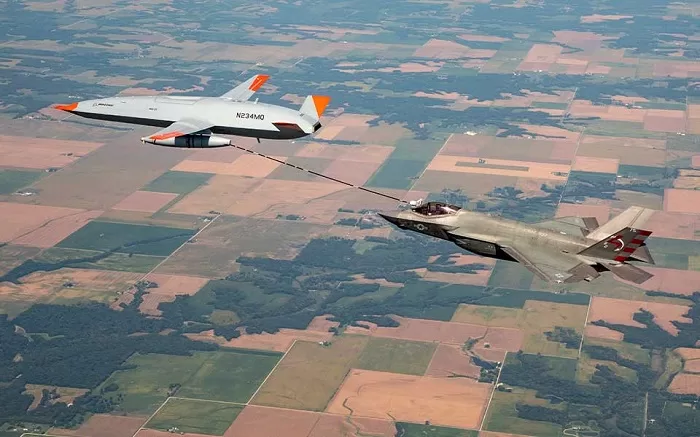Resources
Boeing’s New Land-Based MQ-25 Stingray Variant

- Boeing has unveiled a larger, land-based version of the MQ-25 Stingray unmanned tanker with a 92-foot wingspan, increasing fuel capacity by 40%.
- The new variant is designed for refueling in contested airspaces and could potentially support Collaborative Combat Aircraft (CCAs) and Navy fighters.
- This design builds on the Navy’s MQ-25 program while integrating advancements in refueling technology and operational flexibility.
Boeing has introduced a new, larger land-based version of its MQ-25 Stingray unmanned tanker, which is intended to improve aerial refuelling capabilities in contested areas. This new model, unveiled ahead of the Air & Space Forces Association’s Air Space & Cyber Conference, which begins on September 16, 2024, strives to meet the evolving needs of modern aerial warfare.
Expanded Capabilities for the Modern Era
The new MQ-25 model has a tremendous wingspan expansion from 75 feet (23 meters) to 92 feet (28 meters), which increases fuel capacity by 40%. This design improvement is critical for increasing operational range and efficiency in high-risk situations. Unlike the Navy’s MQ-25, which has folding wings for carrier compatibility, this land-based aircraft lacks this mechanism, allowing for a larger wingspan and more fuel storage.
Boeing has done significant modelling and simulations to refine this concept, with a focus on improving both refuelling and other mission capabilities. The land-based MQ-25 will retain its current fuselage, mission systems, and Rolls-Royce AE 3007N engine, with just the wings modified. The goal of this design strategy is to maximise the performance of the new variant while leveraging the Navy’s MQ-25 program expenditure.
Strategic Role in Contested Environments
The land-based MQ-25 is designed for missions in contested airspace, where conventional tankers may encounter substantial dangers. It might potentially refuel Collaborative Combat Aircraft (CCAs) in high-risk zones, dramatically increasing their operational range and effectiveness. The MQ-25’s larger wings also allow it to carry more payloads, such as refuelling equipment or even weaponry, widening its purpose beyond aerial refuelling.
While the primary focus of this type will be hose-and-drogue refuelling, future modifications could incorporate a receiver probe for refuelling CCAs and Navy fighters with appropriate receptacles. This adaptability is critical to satisfying the different needs of the US Air Force and Navy.
Innovative Features and Future Prospects
The MQ-25 Land-Based Variant is designed to work with existing refuelling systems, such as the KC-46 Pegasus tanker. The new tanker drone will first use a hose-and-drogue refuelling method. However, future updates may expand its capabilities, including integration with modern refuelling technology.
According to John Scudi, Boeing’s acting MQ-25 advanced capabilities program manager, this land-based variant has no direct relationship to the United States Air Force’s Next-Generation Aerial Refuelling System (NGAS) research. Nonetheless, Boeing is currently investigating how this design could supplement the Air Force’s future refuelling tactics, particularly in locations where existing tankers have operating limits.
Recent Developments and Future Goals
In recent months, Boeing has made great progress on its MQ-25 program. In May 2024, the business demonstrated new software that allows F/A-18 pilots to manage the MQ-25 during refuelling operations, hence improving communication and operational efficiency. Furthermore, the installation of the Unmanned Air Warfare Centre on the USS George H.W. Bush (CVN 77) represents a significant step towards integrating unmanned platforms into carrier operations.
Boeing’s goal with the MQ-25 Land-Based Variant is to build on the Navy’s successful MQ-25 program while customising the design to meet the specific requirements of land-based operations. This method not only leverages current investments, but it also pushes the bounds of unmanned aerial refuelling technology.
As Boeing prepares to unveil this new model at the Air Space & Cyber Conference, the industry will be watching intently to see how these developments will impact the future of aerial refuelling and unmanned aerial systems.

















































